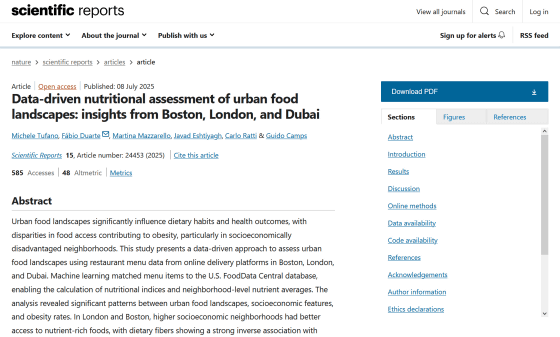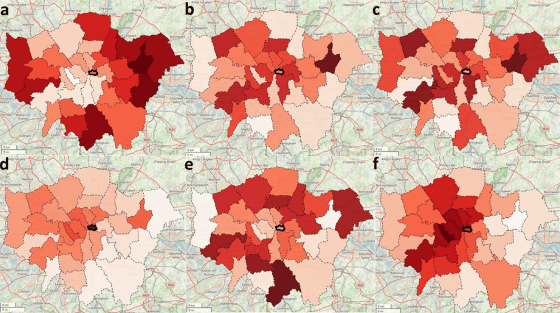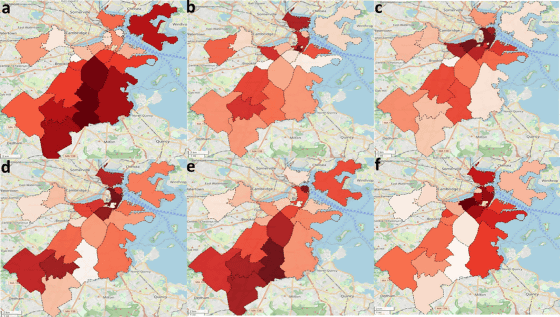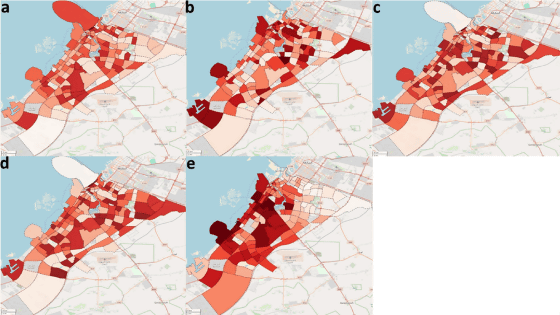A large-scale study examining millions of menus in three cities suggests that obesity may be related to 'local restaurant menus'

It is known that obesity is not necessarily a matter of a person's awareness or lifestyle, but is
Data-driven nutritional assessment of urban food landscapes: insights from Boston, London, and Dubai | Scientific Reports
https://www.nature.com/articles/s41598-025-08098-9

Study shows a link between obesity and what's on local restaurant menus | MIT News | Massachusetts Institute of Technology
https://news.mit.edu/2025/study-shows-link-between-obesity-and-local-restaurant-menus-0711
Health experts have long believed that food deserts -- areas with few grocery stores and dining options and limited access to cheap, nutritious food -- are one of the causes of increased obesity.
A research team from Massachusetts Institute of Technology and Wageningen University in the Netherlands conducted an analysis of three cities: Dubai in the United Arab Emirates, Boston in the eastern United States, and London in the UK, to investigate the relationship between food environment and obesity.

The study extracted menus from restaurants in three cities that were listed on food delivery platforms as of summer 2023. Each menu was matched with
The number of restaurants and menu items included was approximately 222,000 from over 2,000 restaurants in Boston, approximately 1.6 million from approximately 9,000 restaurants in Dubai, and approximately 3.1 million from approximately 18,000 restaurants in London. Machine learning was used to match these menu items with the FoodData Central database and analyze the nutritional value of each menu item.
They then divided each city into neighborhoods and rated how nutritious the restaurants in each neighborhood were serving up, examining correlations with factors like obesity rates and housing prices in each neighborhood.
The study found a clear correlation between the nutritional value of the menus offered by local restaurants in London and the obesity rate. The figure below shows the color-coded obesity rate for each area of London, with the following indicators: a: Adult obesity rate b: Meal balance index c: Menu nutritional value score d: Amount of dietary fiber in the menu e: Amount of potassium in the menu f: Housing price. The darker the color, the higher the obesity rate and nutritional value score, and the more nutritious the menus available at local restaurants are, the fewer people who are obese.

Meanwhile, in Boston, the correlation was somewhat weaker, but still showed that areas with more fiber-rich and other nutritious food options on the menus of local restaurants were more likely to have lower obesity rates.

As no data on obesity rates was available for Dubai, the following figures show 'a: nutrient balance of menus,' 'b: nutritional value score of menus,' 'c: amount of dietary fiber of menus,' 'd: amount of potassium of menus,' and 'e: housing price.' The analysis shows a strong correlation between housing price and the nutritional value of menus at local restaurants, suggesting that wealthier residents have more nutritious options.

'At the food level, fewer nutritious foods lead to more obesity. The fact is that not only is there more fast food in poorer areas, but the nutritional value is different,' said Michael Tufano, lead author of the study and a doctoral student at Wageningen University.
Related Posts:
in Science, Posted by log1h_ik







